Ever wondered why your CBD website isn’t as buzzing as a beehive? The secret ingredient could be SEO! In the ever-growing CBD market, standing out is crucial, and that’s where effective SEO strategies come into play. They’re not just about peppering keywords like sprinkling salt; it’s the art of making your website visible to those who need it. Here at Plerdy, we understand the essence of SEO in driving your CBD business’s online success. This guide is your roadmap to mastering SEO for CBD companies, ensuring your products don’t just stay on the shelves but reach the right audience.

Understanding the Basics of SEO in the CBD Industry
Imagine fishing in the vast ocean of the internet; SEO is your bait for the big catch in the CBD market. Let’s dive into understanding SEO basics tailored for the CBD industry, ensuring your brand isn’t just another drop in the ocean.
What is SEO?
SEO boosts your website’s visibility on Google. It involves optimizing your web content so search engines rank it high for specified keywords. In the CBD industry, where advertising options are limited due to regulations, SEO becomes your digital megaphone. SEO can help you reach CBD-related information, products, and services seekers.
Importance of SEO for CBD Brands
In the rapidly expanding CBD sector, SEO is not just important; it’s essential. With the restrictions on traditional advertising for CBD products, SEO stands out as the safest and most cost-effective way to increase your brand’s online presence. It’s the digital handshake between your brand and potential customers searching for CBD products. BrightEdge found that organic search generates 51% of site traffic and 40% of income, making it crucial for business growth. For CBD companies, investing in SEO means tapping into a market of informed, health-conscious consumers looking for natural alternatives. With the right SEO strategy, your CBD brand can achieve higher search rankings, leading to increased traffic, better conversion rates, and a stronger market presence. By focusing on relevant keywords, quality content, and user experience, CBD businesses can navigate the complexities of digital marketing, making SEO an indispensable tool in their arsenal.
Understanding CBD SEO principles opens up a world of possibilities. It’s the first step in ensuring your brand’s voice is heard in the crowded online marketplace. Dive deep into SEO and watch your CBD business flourish digitally.
Best SEO Practices for CBD eCommerce Websites
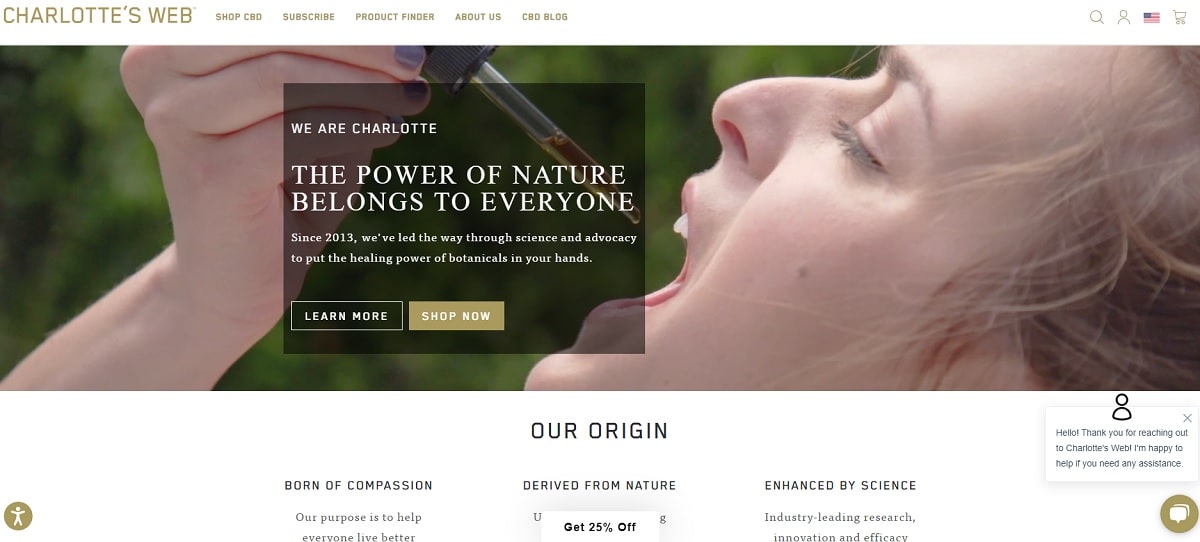
Transforming your CBD eCommerce website into a traffic magnet isn’t magic; it’s about mastering SEO best practices. In the competitive CBD sector, online presence is as important as product quality.
Content Optimization Strategies
For CBD eCommerce websites, content is the kingmaker. Create high-quality, engaging, informative content that resonates with your audience’s needs and queries. Prioritize educational and informative articles, product reviews, and user guides incorporating relevant CBD terms. According to Moz, a leader in SEO software, content quality and keyword relevance significantly impact search engine rankings. Ensure your content is comprehensive, addressing topics like CBD benefits, usage guidelines, and industry news. Use photos and videos to increase user engagement and dwell time, which Google analyzes to evaluate page quality. Engaging content attracts visitors and stimulates product exploration.
Speed and Technical SEO Considerations
A fast-loading website is non-negotiable. Google’s PageSpeed Insights can help you identify areas for improvement. Technical SEO, which includes optimizing website structure, improving mobile responsiveness, and ensuring secure browsing (HTTPS), is crucial. Tools like SEMrush offer comprehensive audits to identify technical glitches. For CBD eCommerce, user experience is paramount. Simplify navigation, optimize product pages with rich descriptions, and ensure seamless device browsing. Schema markup helps search engines understand page content and display rich snippets.
On-Page and Off-Page SEO Techniques
On-page SEO for CBD websites involves optimizing individual web pages to rank higher. Focus on title tags, meta descriptions, and headers. Use targeted keywords naturally in your content, and don’t forget to optimize images with descriptive ALT tags. Off-page SEO revolves around building your website’s authority. Invest in quality backlinks from reputable industry websites. For organic traffic, engage with your audience on social media, forums, and blogs. Encourage customer reviews and testimonials, which add credibility and can improve your website’s ranking.
In CBD eCommerce, an effective SEO strategy is the key to unlocking a world of potential customers. By focusing on these best practices, your CBD business can rise above the digital noise, attracting and retaining a loyal customer base.
Check out Moz’s guide for more in-depth insights on on-page SEO. SEMrush’s technical SEO guide offers valuable resources for a deeper understanding of technical SEO.
Keyword Research and Targeting for CBD Websites
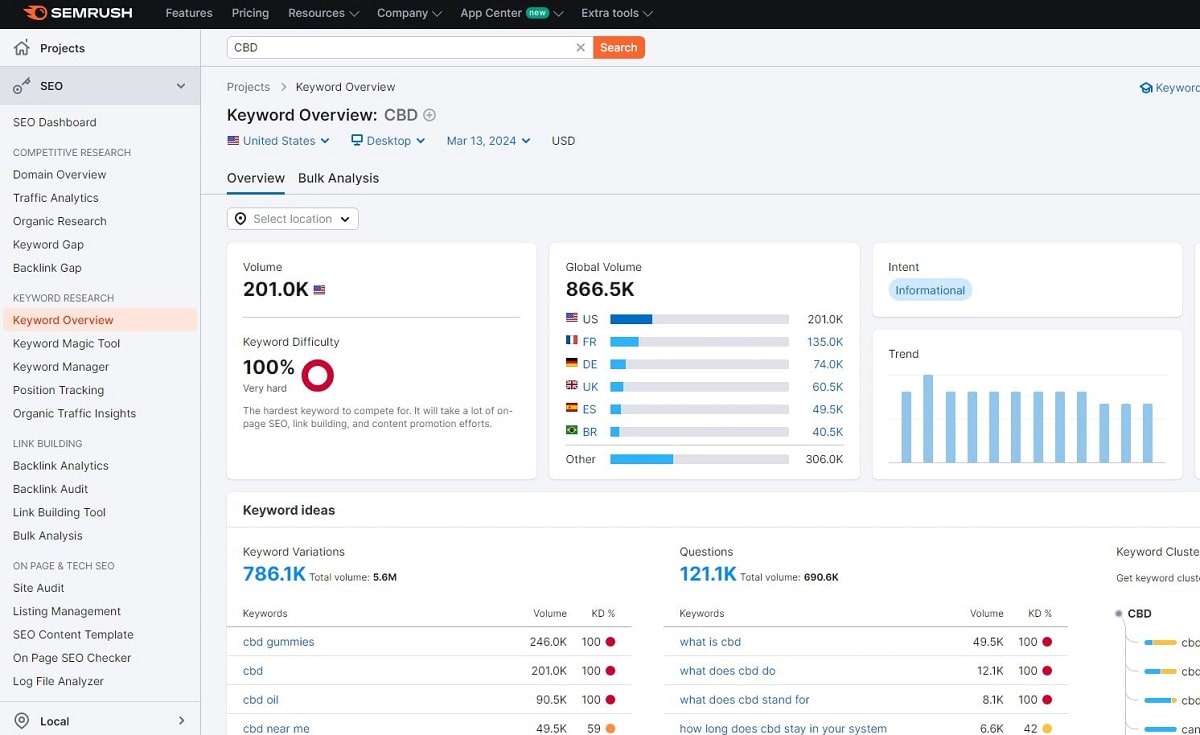
Choosing the right keywords for your CBD website is like finding the perfect blend for your CBD oil; it requires precision, understanding, and a bit of science. Let’s explore the art of keyword research and targeting, an essential step in connecting with your audience.
Long-tail vs. Short-tail Keywords
CBD SEO requires understanding long-tail and short-tail keywords. Short-tail keywords are broad, often one to two words, like “CBD oil.” They have high search volumes but are extremely competitive and less specific. In contrast, long-tail keywords, such as “organic CBD oil for anxiety,” are more specific, less competitive, and have a lower search volume. These keywords are critical in targeting niche audiences and addressing specific user intents. According to Ahrefs, a leader in SEO analysis, long-tail keywords account for most web searches, making them invaluable for a targeted SEO strategy. They help your CBD site attract more traffic and traffic that is more likely to convert.
Tools and Techniques for Effective Keyword Research
SEO relies on keyword research, so use Google Keyword Planner and SEMrush. Start by brainstorming terms related to your CBD products, such as “CBD for sleep” or “hemp oil benefits.” Use these tools to discover variations of these keywords, their search volumes, and competition levels. Pay attention to the ‘People also ask’ section in Google search results, as it provides insight into related queries.
Another technique is analyzing your competitors. Tools like Moz’s Keyword Explorer allow you to see which keywords your competitors are ranking for. This can inspire and help identify gaps in your strategy. To consider user intent behind keywords. Are your potential customers looking to buy, seek information, or compare products? Tailoring your content to these intents enhances the chances of your website ranking higher.
Additionally, follow industry news and trends. CBD is a rapidly evolving industry; staying updated can help you identify emerging keywords. Consider using Google Trends to monitor the popularity of certain search queries over time.
Mastering keyword research and targeting is like navigating a roadmap to your audience’s needs and interests. By strategically selecting and utilizing keywords, your CBD website can become a beacon, guiding potential customers to your digital doorstep.
Explore the Google Keyword Planner and Ahrefs’ keyword research resources for more insights.
SEO Strategies for Link Building and Content in the CBD Space
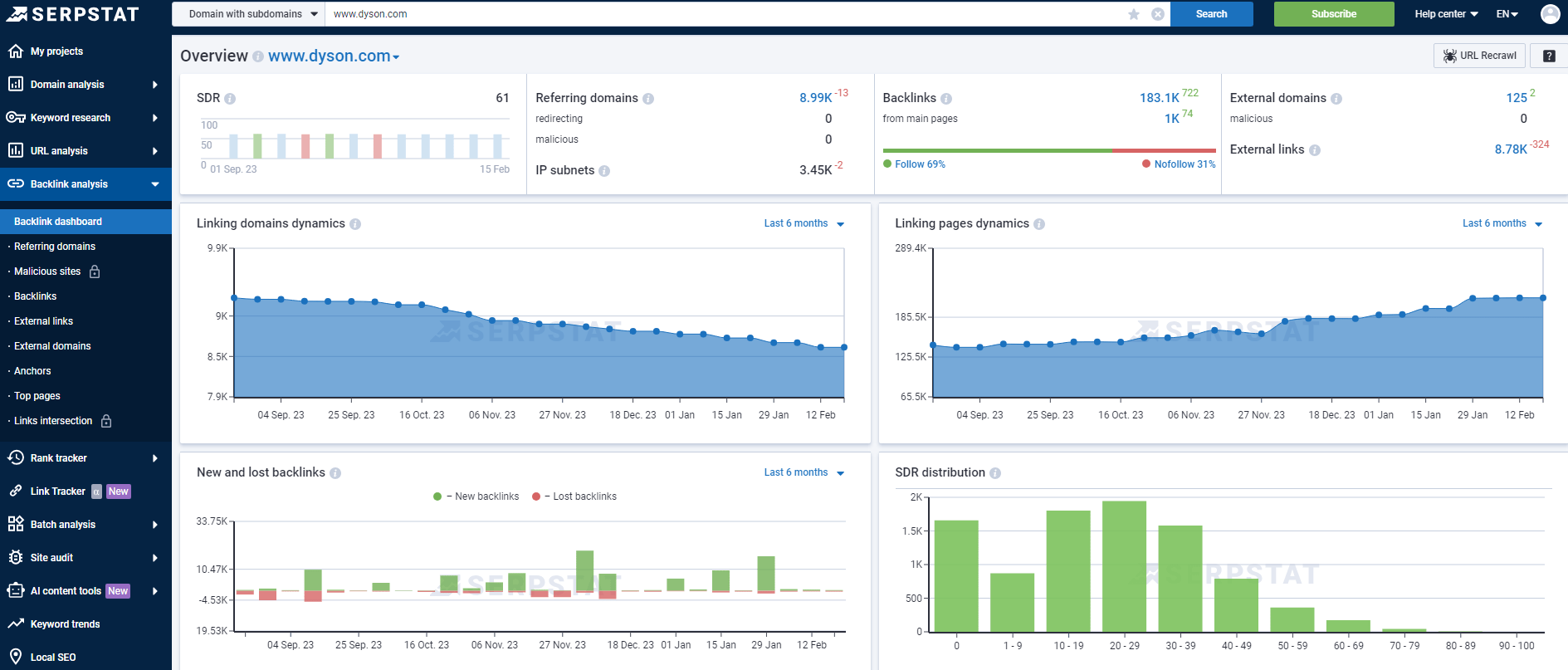
In the world of CBD, effective SEO relies heavily on the synergy of link-building and content marketing. These strategies are the pillars that support and enhance the SEO of any CBD website, much like water and sunlight nourish a garden. Let’s explore how these vital elements work together to boost the SEO of your CBD website.
Establishing a Robust Backlink Profile for CBD Websites
In the CBD industry, credibility is paramount, and a strong backlink profile is a cornerstone of building a trustworthy online presence. Backlinks, which are hyperlinks from external sites to your website, serve as endorsements, enhancing your site’s authority and SEO performance.
Start by identifying reputable health, wellness, and CBD-related websites. Using tools like Moz’s Link Explorer, analyze your competitors’ backlink profiles to uncover potential link-building opportunities. Engaging in guest posting on these authoritative sites effectively garners quality backlinks, bolsters your CBD website’s SEO, and establishes your brand’s authority in the CBD market.
Backlink quality trumps quantity. Aim to acquire backlinks from high domain authority sites relevant to the CBD industry and have a genuine audience. Steer clear of black-hat SEO practices, such as purchasing backlinks, which can negatively impact your website’s search engine rankings.
Developing Engaging, High-Quality Content for CBD SEO
Content is the bedrock of SEO, particularly in the specialized field of CBD. Producing high-quality, informative content is crucial in attracting users and search engines to your CBD website. Begin by understanding your target audience’s needs and interests. Develop blog posts, infographics, and videos that inform your audience about the nuances of CBD, its benefits, usage recommendations, and the latest industry developments.
Employ keyword research to align your content with what your audience is searching for online. Tools like BuzzSumo offer valuable insights into trending topics within your niche. Engage your audience with informative guides, how-to articles, and customer testimonials. Well-crafted content not only draws visitors but can also encourage other sites to link back to your resources.
For CBD websites, it’s essential to prioritize transparency and accuracy in content marketing, considering the industry’s regulatory landscape. Ensure that all claims are backed by scientific evidence and comply with legal standards related to health claims.
By integrating strategic link building with impactful content marketing, you can significantly enhance the digital footprint of your CBD business. Your website will become a CBD community resource thanks to these SEO efforts.
For an in-depth guide on backlinking strategies, visit Moz’s Beginner’s Guide to Link Building. HubSpot’s Content Marketing Guide is a valuable resource for content marketing insights.
Local SEO Strategies for CBD Businesses
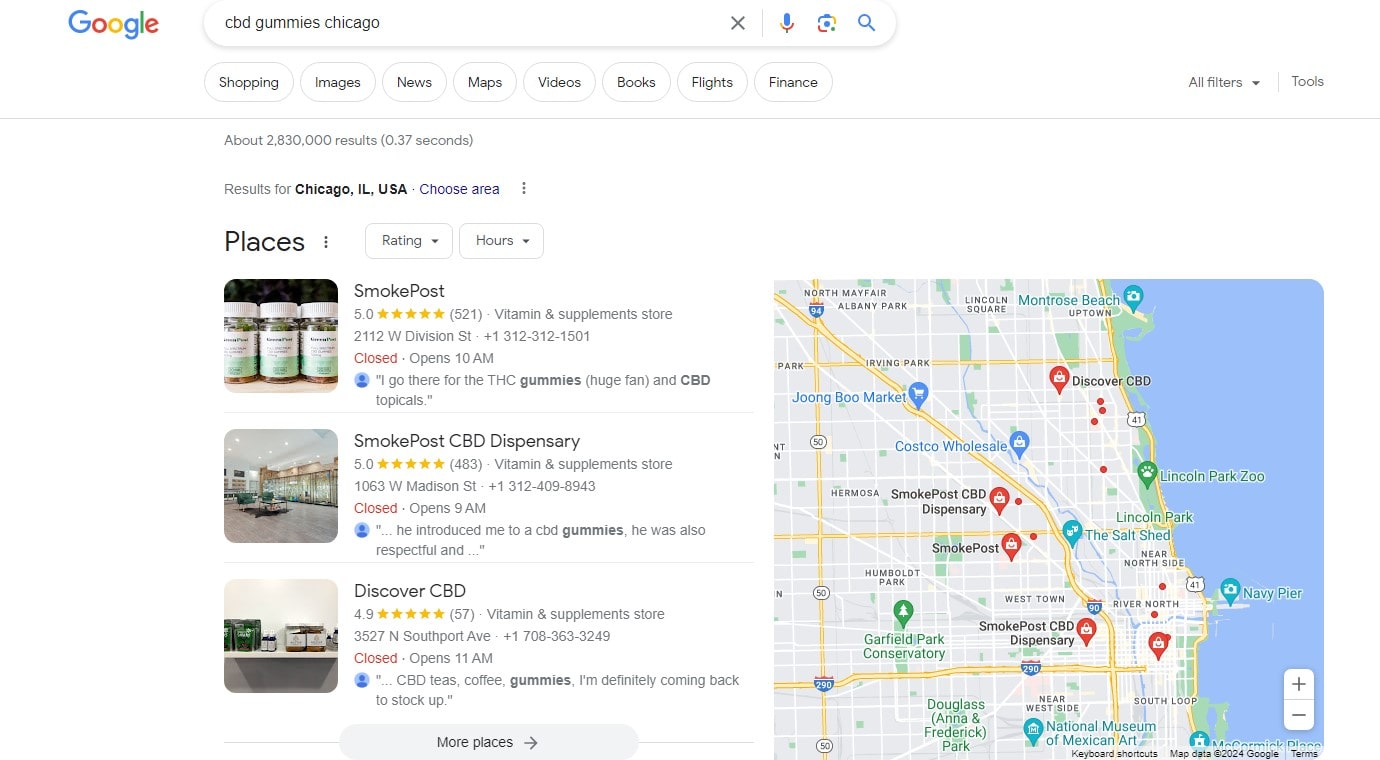
Being the local go-to source in the bustling CBD market is like finding a prime spot at a farmers’ market. Let’s explore how local SEO strategies can position your CBD business where your local customers are searching.
Optimizing for Google My Business
A robust Google My Business (GMB) profile is the cornerstone of local SEO for CBD businesses. It’s your digital storefront, allowing local customers to find you easily. Claim and verify your GMB listing. Keep your business name, address, phone number, and hours current.
Adding high-quality photos of your products, store, and team can significantly enhance your listing’s appeal. A positive online reputation is crucial, as 87% of consumers read local company reviews in 2020, according to BrightLocal. Encourage satisfied customers to submit reviews and respond to them positively and negatively.
Include relevant categories like “CBD Store” or “Wellness Store”, and write a compelling business description incorporating your main keywords. Regularly update your GMB profile with posts about new products, promotions, or events to keep it engaging and informative.
Local Keywords and Content Optimization
Local SEO success requires keyword-optimized website content. Research keywords that include your city, neighborhood, region, and CBD-related terms. For instance, “CBD oil in [City Name]” or “best CBD shop near [Location].” Put these keywords in your website’s content, meta titles, descriptions, and blogs.
Creating location-specific content can also drive local SEO. Blog about local events, community activities, or CBD’s role in local wellness trends. This improves your local search rankings and builds a connection with your community.
Remember to optimize for ‘near me’ searches. As Google’s local search algorithm relies on proximity, ensure your NAP (Name, Address, Phone number) details are consistent across your website and all online directories. This consistency helps Google verify your location, making it more likely to show your business in local searches.
Local SEO for CBD businesses is about being visible in your community’s digital map. By optimizing your Google My Business and infusing local flavor into your online presence, your CBD store can become the first choice for local customers.
For more insights on local SEO, explore Moz’s Local SEO Guide. To deepen your understanding of Google My Business optimization, visit Google’s My Business Help Center.
Measuring and Analyzing SEO Performance
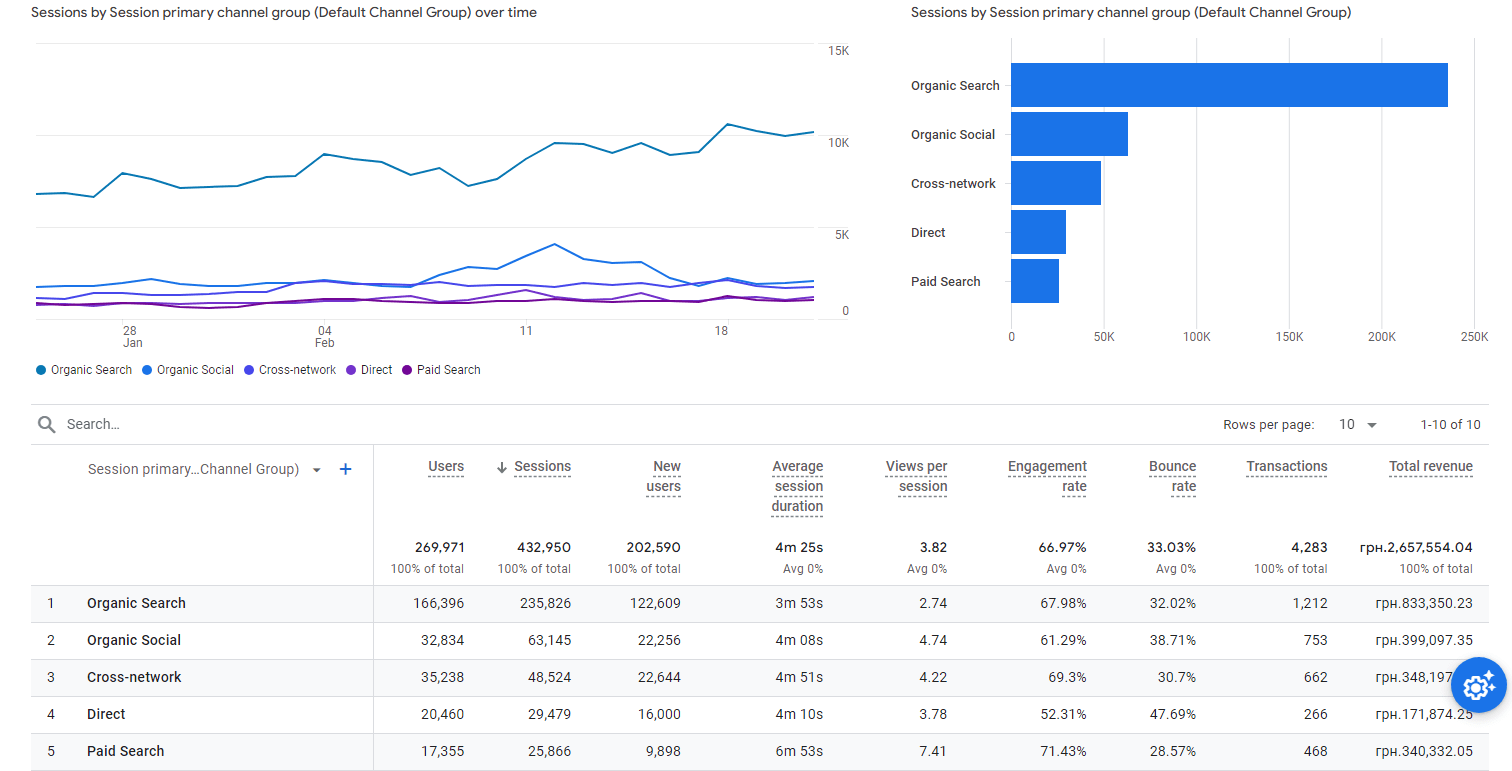
In the world of SEO for CBD businesses, knowing your score is as crucial as the strategy itself. Let’s uncover how measuring and analyzing SEO performance can turn numbers into actionable insights.
Key Performance Indicators (KPIs) for SEO
Effective SEO strategy requires monitoring specific KPIs to gauge success. Key metrics include organic traffic, which can be tracked using Google Analytics. This shows the number of visitors coming to your website from search engines, reflecting the reach of your SEO efforts. Ranking your keywords on search engine results pages is another important KPI. Tools like SEMrush or Ahrefs can provide these insights. Also, track the click-through rate (CTR) from SERPs, which helps understand how appealing your page titles and descriptions are to potential visitors. Finally, monitor your backlink profile’s growth and quality, as this impacts your website’s authority and ranking.
Utilizing SEO Analytics Tools
Effective SEO performance analysis requires the correct tools. Google Analytics offers comprehensive insights into website traffic, user behavior, and conversion rates. Google Search Console helps monitor website performance in search results, highlighting issues like crawl errors or security problems. SEMrush and Ahrefs offer competitive analysis, backlink tracking, and keyword research capabilities, providing a deeper dive into your SEO strategy’s effectiveness. Regularly reviewing these analytics allows for timely adjustments and optimization, ensuring your SEO strategy aligns with your business goals.
Understanding the story behind your SEO numbers is key to measuring and analyzing them. With the right tools and focus on key metrics, you can fine-tune your SEO strategy, ensuring your CBD business stays ahead in the digital race.
For deeper insights, visit Google Analytics and Google Search Console. To explore more about keyword tracking and competitive analysis, check out SEMrush.
Staying Ahead of SEO Trends in the CBD Industry
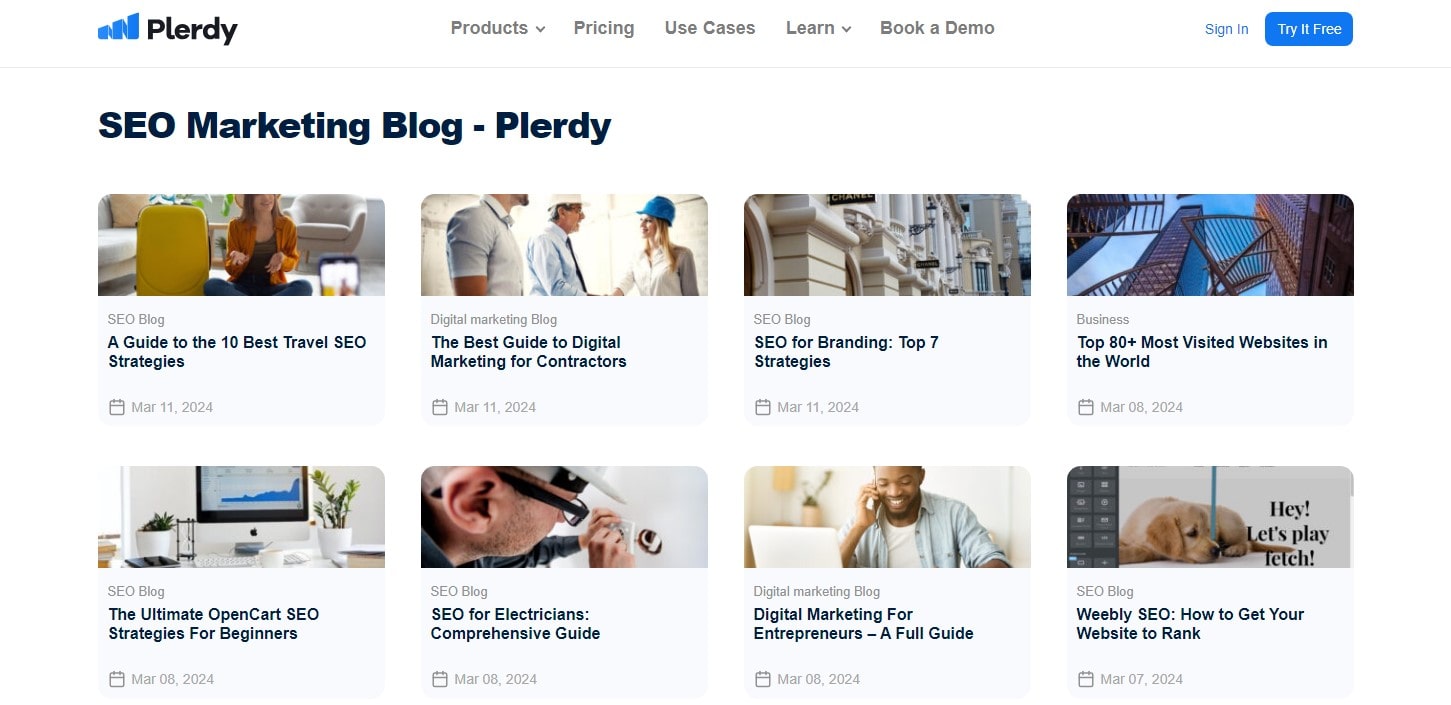
In the dynamic CBD industry, staying updated with SEO trends is like nourishing your plants; it’s essential for growth. Let’s explore how staying atop these trends can boost your CBD business’s online presence.
CBD industry SEO is constantly changing due to algorithm changes. Keeping up with these developments is essential for maintaining and boosting search engine rankings. User experience is becoming more important. Google’s algorithm updates now prioritize websites offering a seamless, user-friendly experience. Your CBD website should load quickly, navigate easily, and provide valuable content.
Another trend is the rise of voice search. With more people using voice assistants for online searches, optimizing your content for conversational queries becomes vital. This involves incorporating natural language and question-based phrases relevant to CBD products and information.
Content quality remains a top priority. Given the sensitive nature of CBD products, providing accurate, informative, and trustworthy content is essential. This includes adhering to legal guidelines and backing your claims with scientific research, ensuring compliance and reliability.
Local SEO is increasingly important, particularly for CBD businesses with physical locations. Optimization of your Google My Business listing, review collection and response, and local keyword use in content are required.
Mobile optimization is also critical as more users search on mobile devices. Ensure your CBD website is responsive and offers a seamless mobile experience.
Finally, informative and amusing CBD product videos can increase user engagement and dwell time, enhancing SEO.
Staying ahead of SEO trends in the CBD industry is vital for your business’s online success. By embracing these evolving practices, your CBD brand can maintain a robust online presence, attracting and retaining a knowledgeable and discerning customer base.
Consider visiting Search Engine Land and Google’s Webmaster Blog for the latest SEO trends and guidelines.
Conclusion
Diving into the SEO world for CBD businesses is like embarking on an exciting journey; there’s always something new to discover. We’ve explored the essentials, from keyword research to staying atop industry trends, setting you up for online triumph. But remember, the digital landscape is ever-changing, and keeping up requires constant learning and adaptation. Curious to unearth more digital marketing gems? Dive into Plerdy’s blog for a treasure trove of insights that can further elevate your strategy. Embrace the power of Plerdy’s tools to ensure your CBD business thrives and leads the pack in the digital realm.
